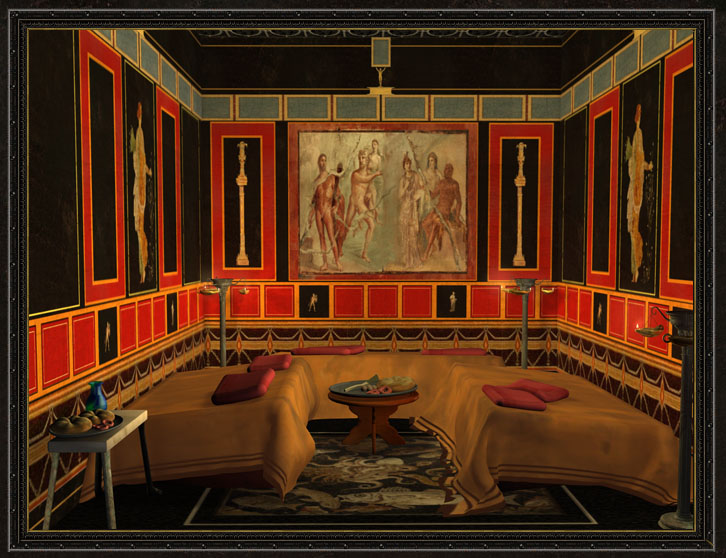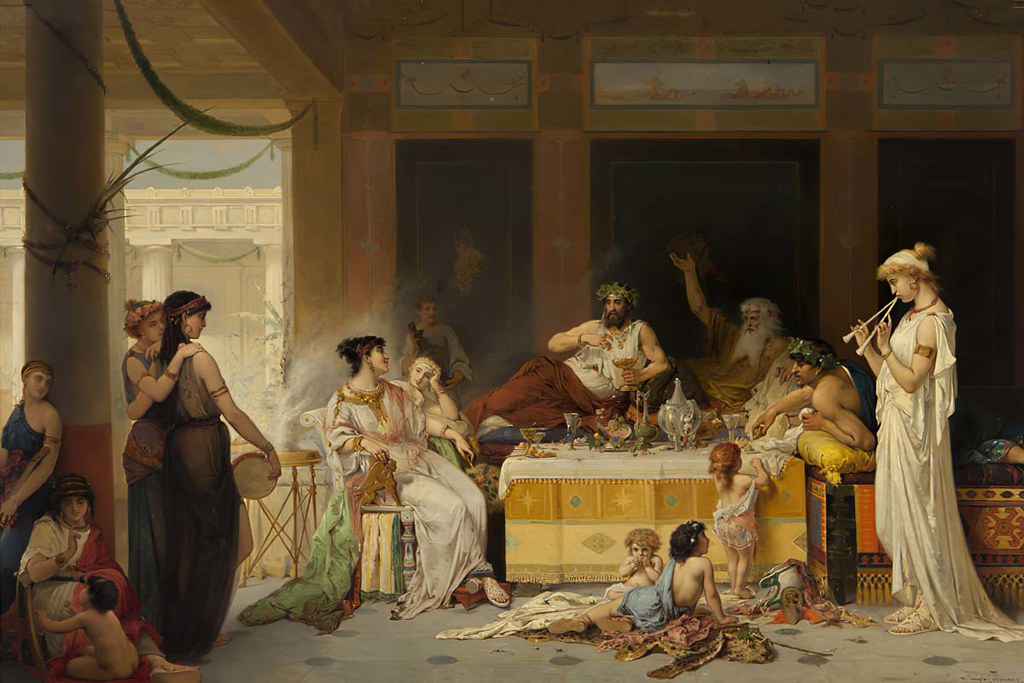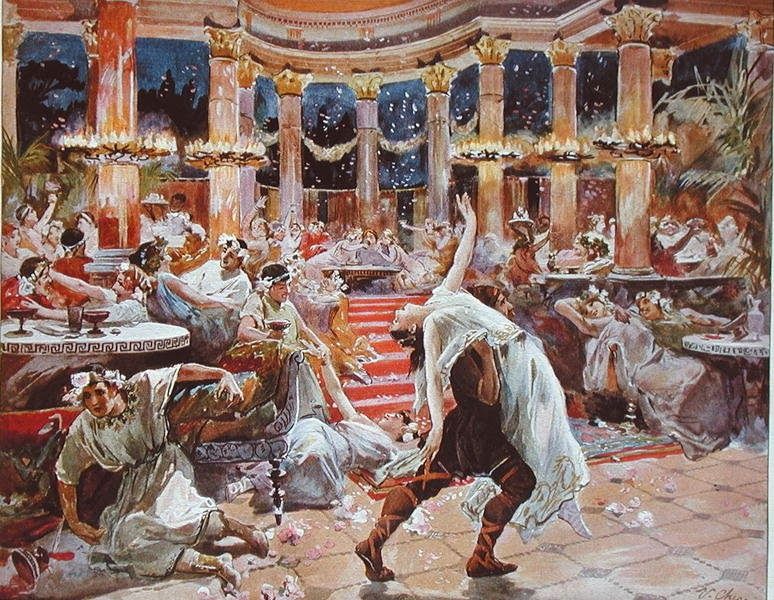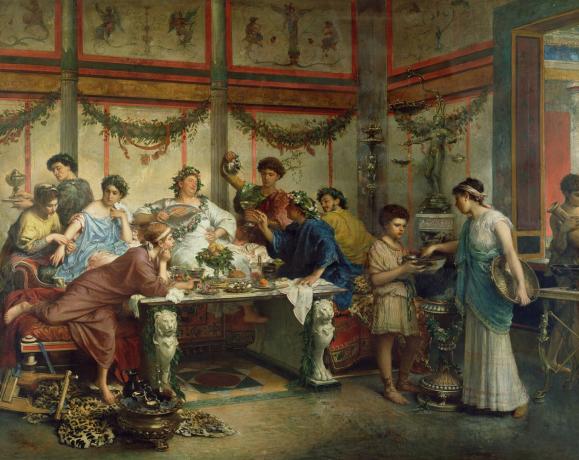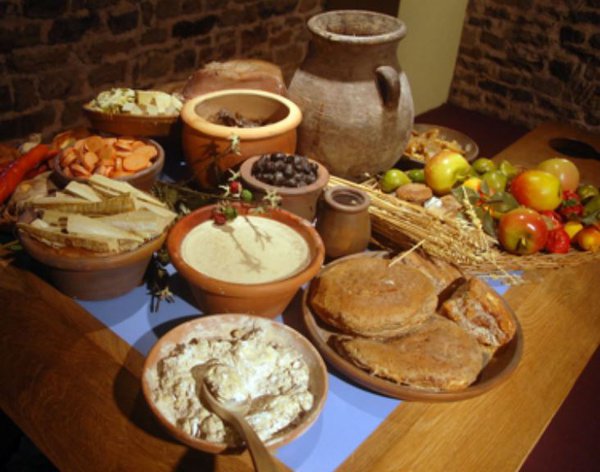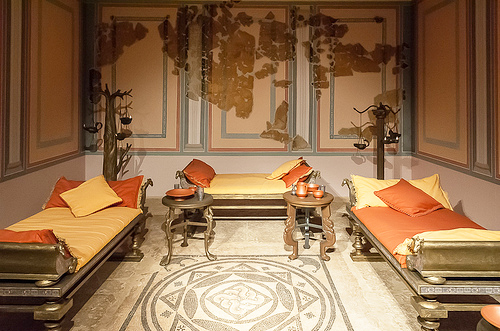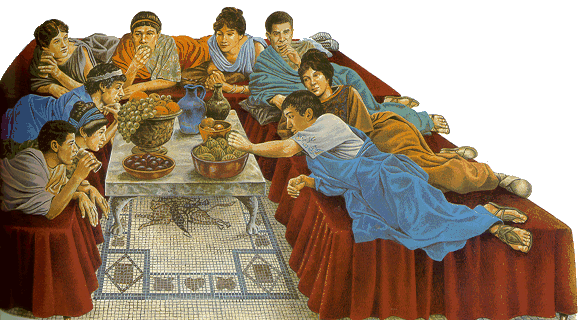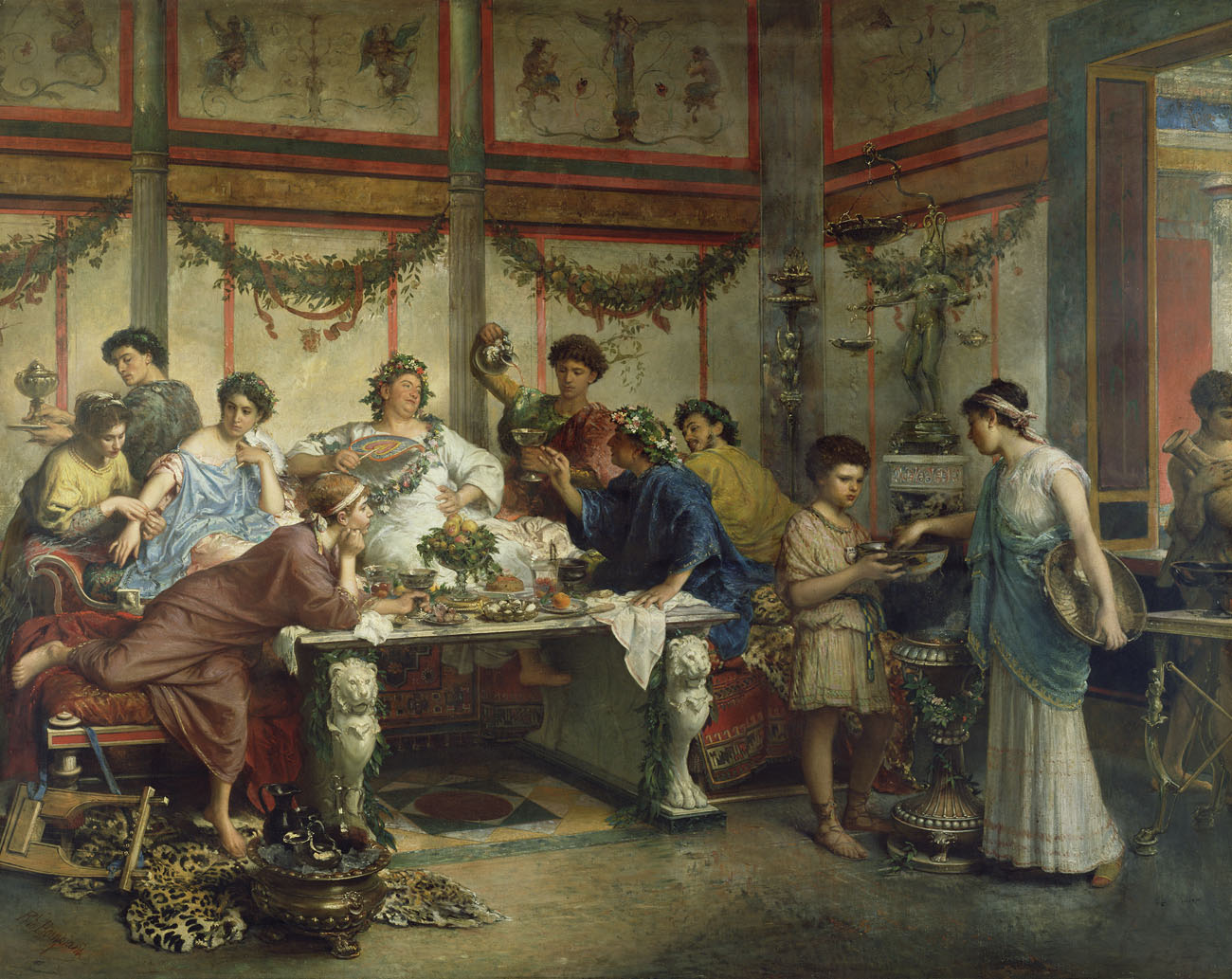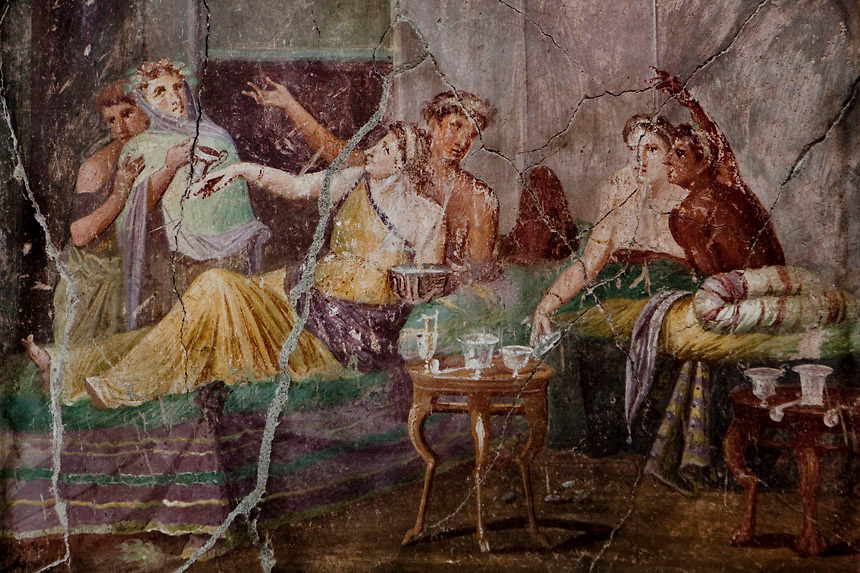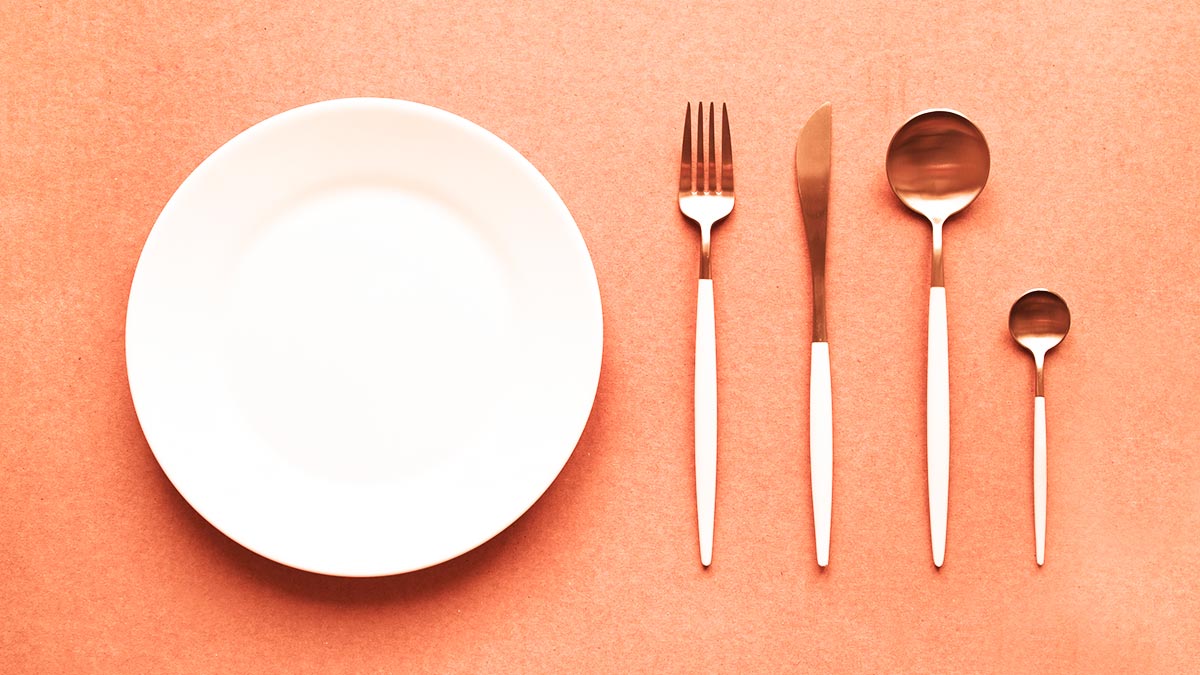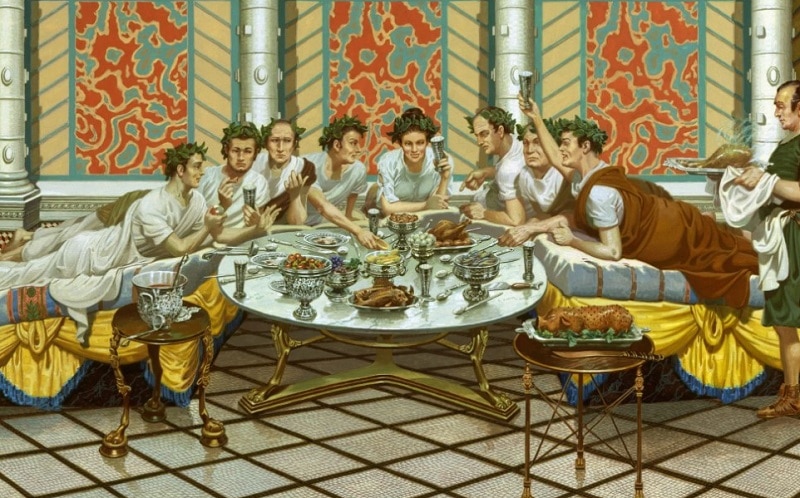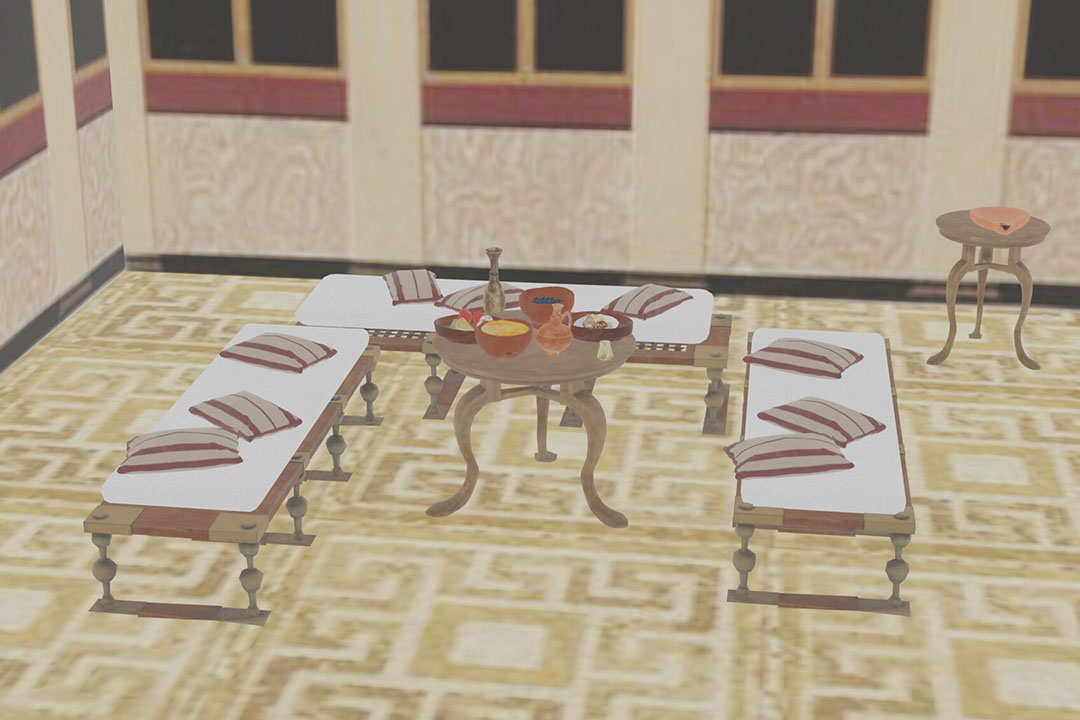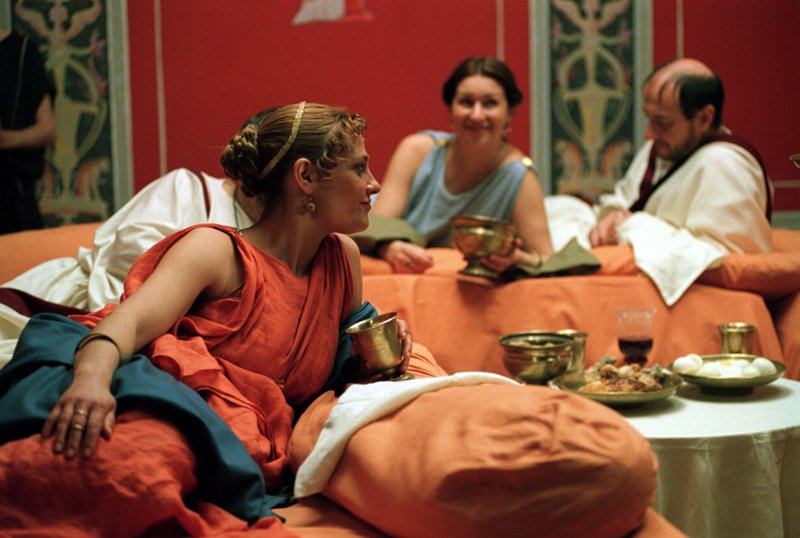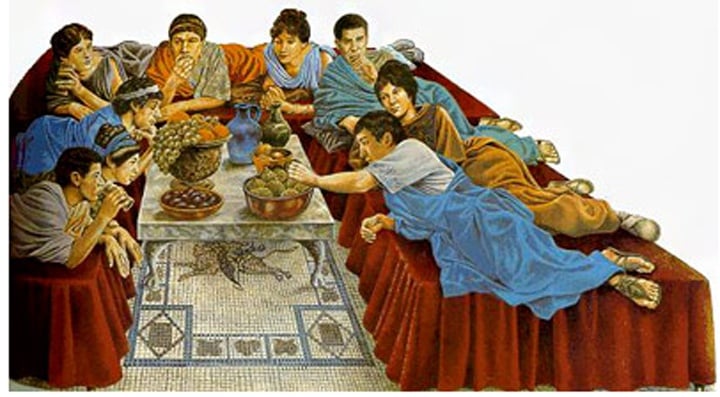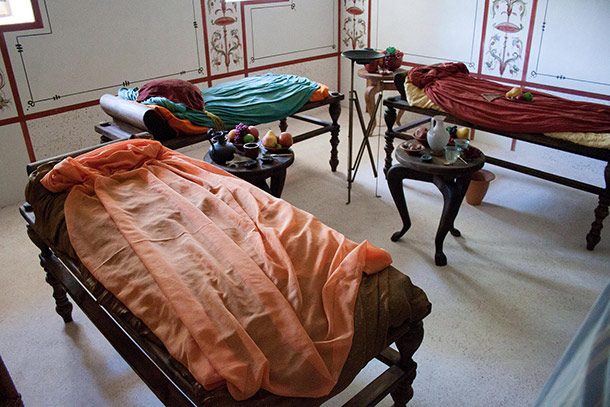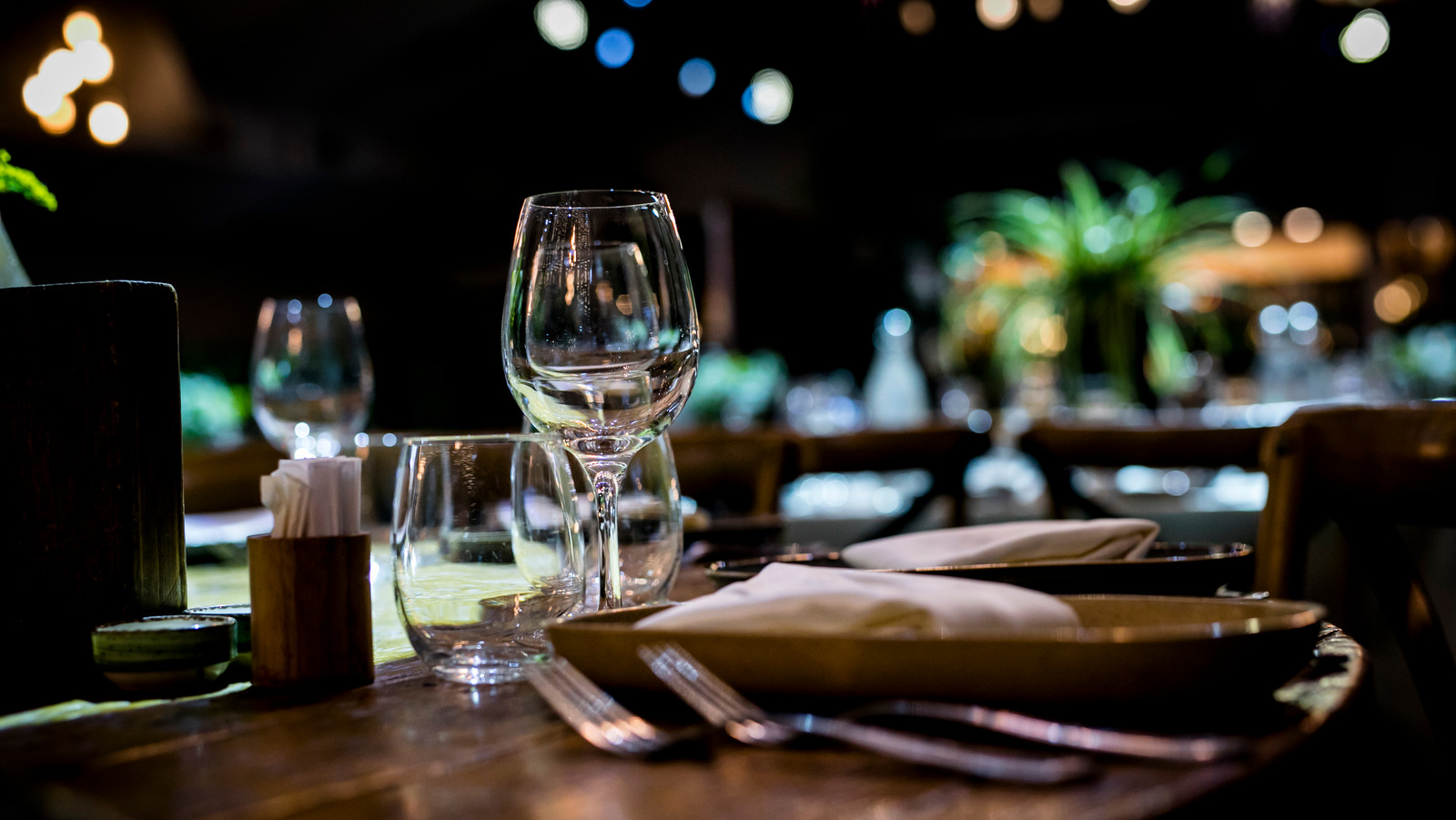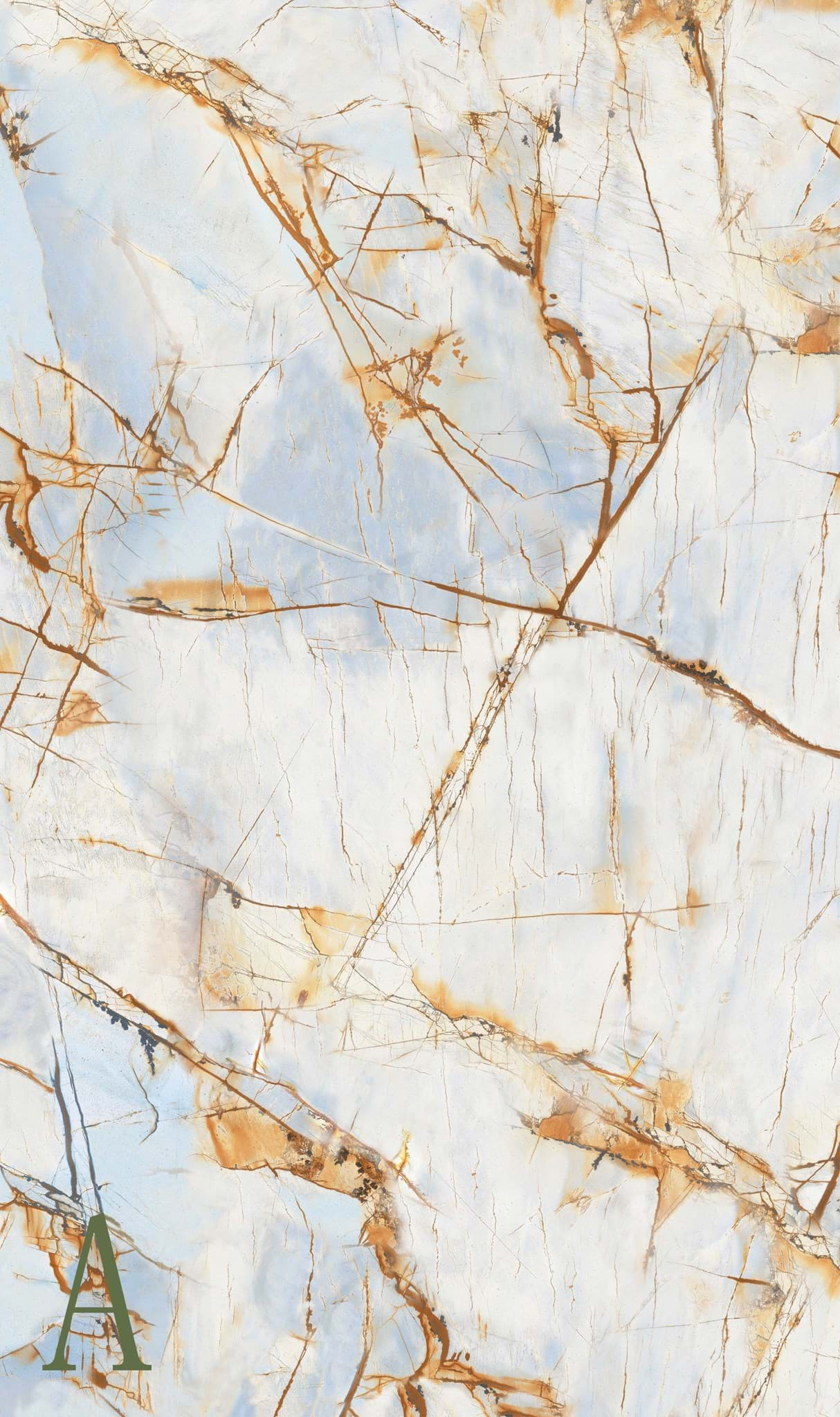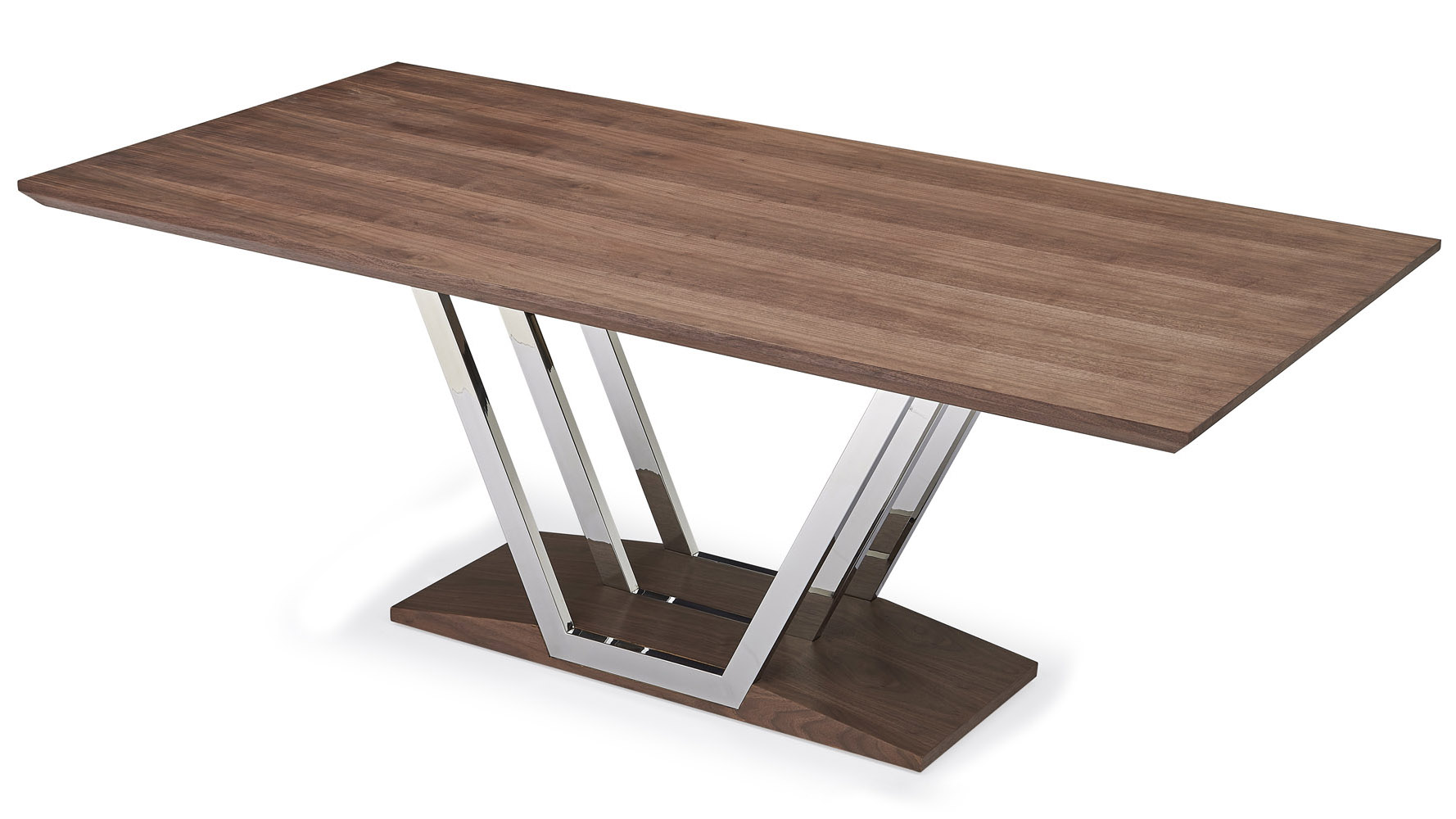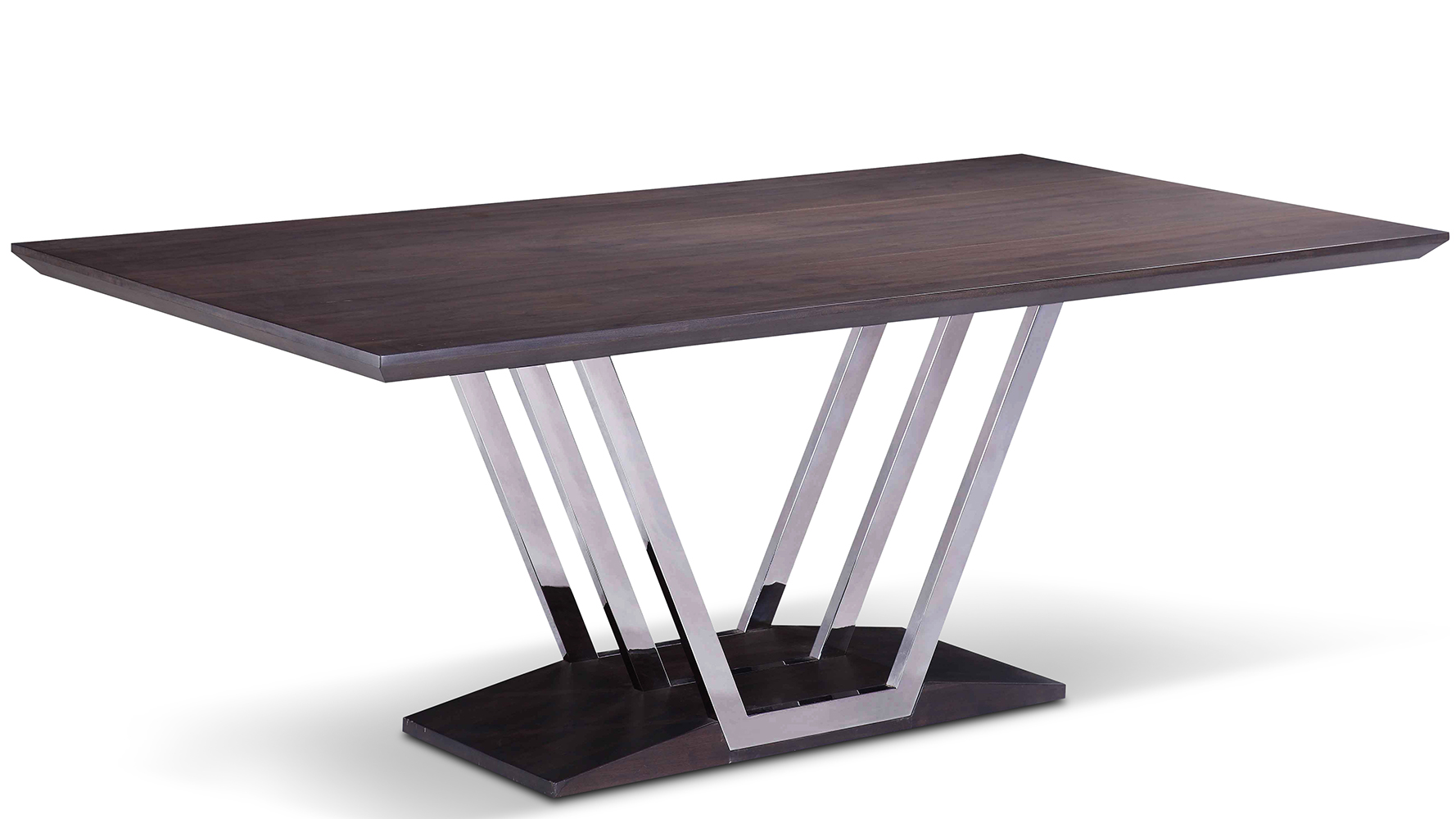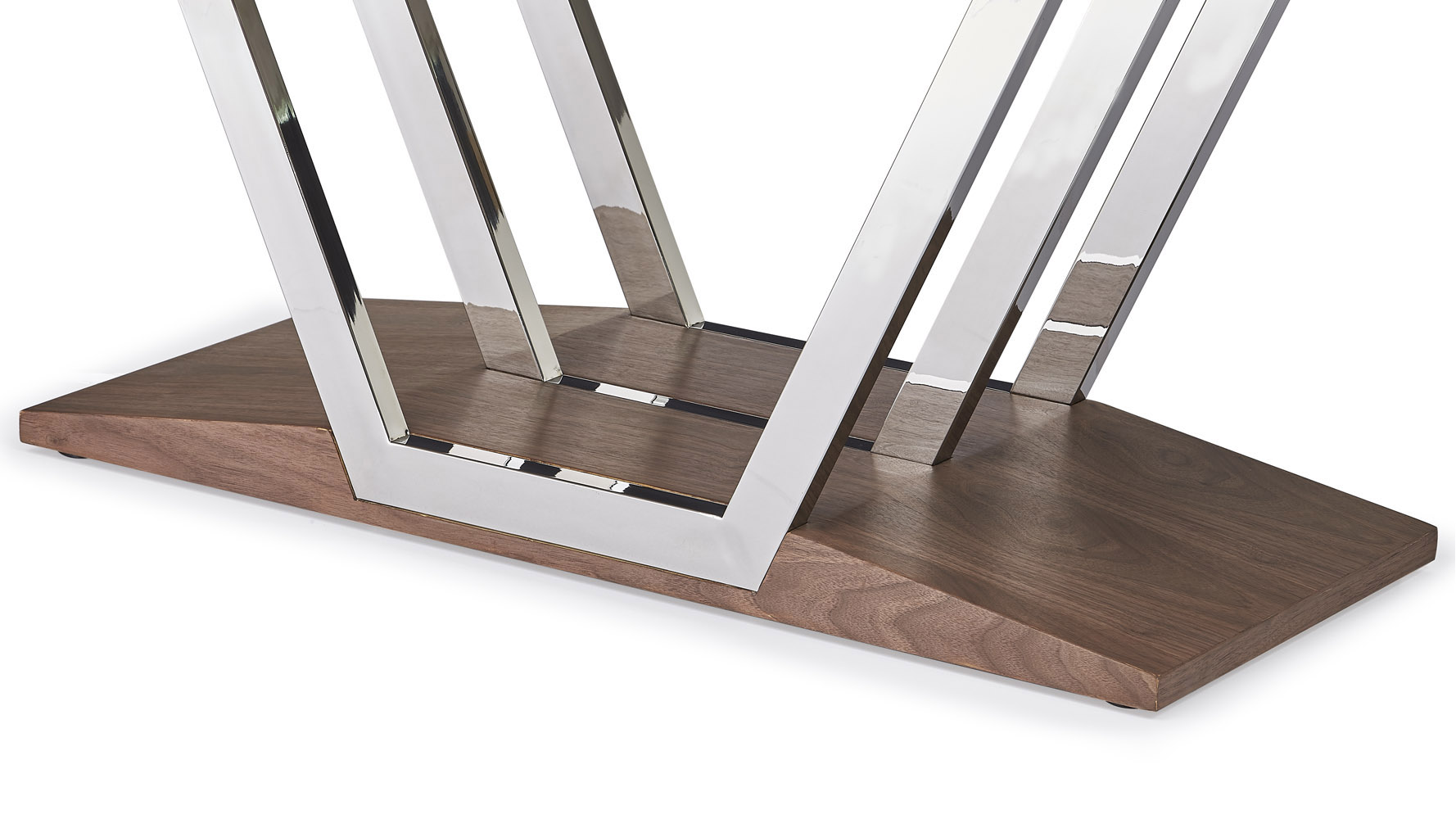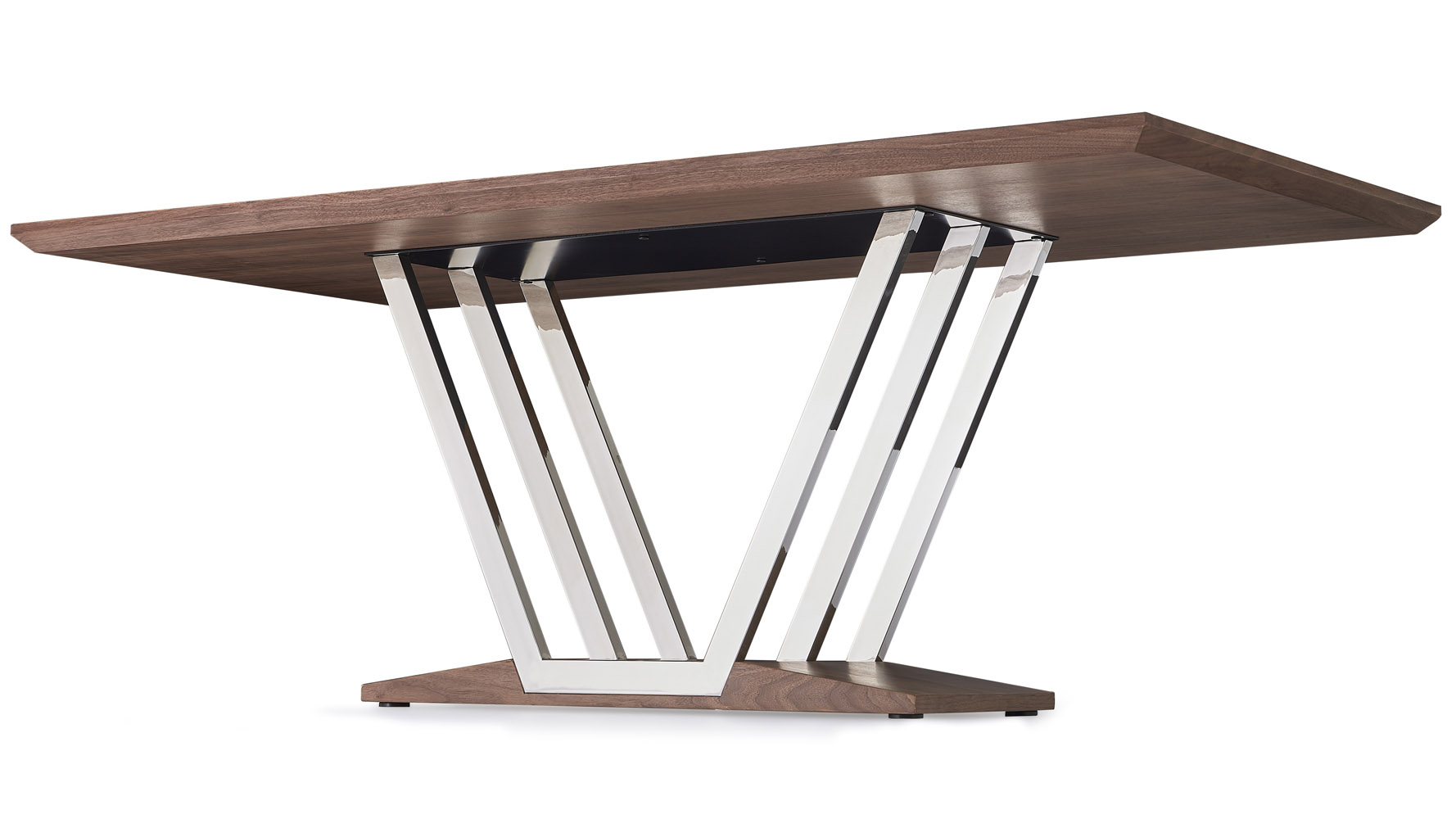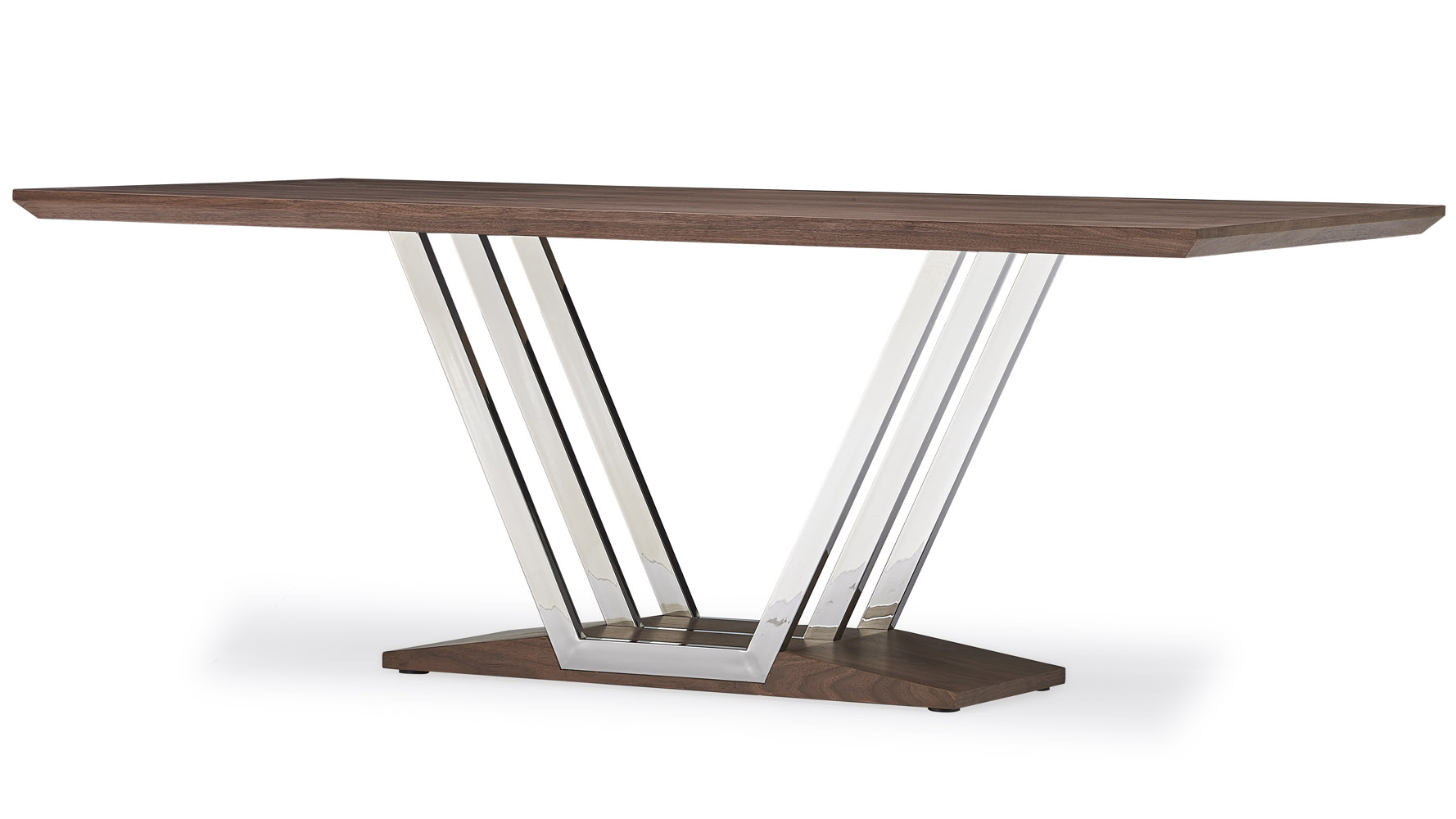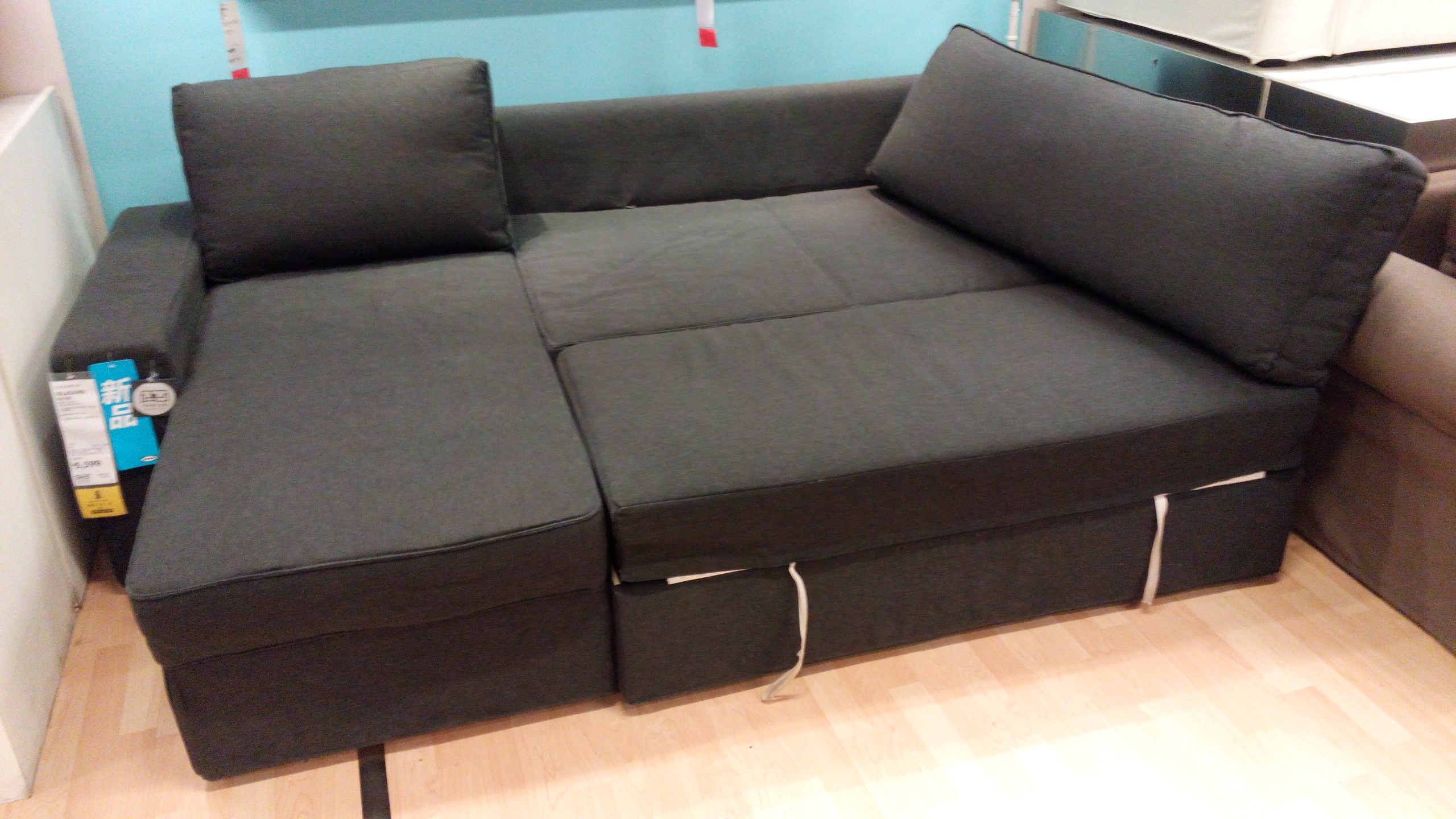The ancient Roman dining room, also known as the triclinium, was a central part of Roman culture and society. Here are 10 fascinating facts about this important part of daily life in ancient Rome.Roman Dining Room Facts
The dining room was not just a place to eat, but also a place for socializing and conducting business. It was typically located in the wealthiest and most important part of the house, often with a view of the garden or courtyard.Ancient Roman Dining Room
The Roman banquet, or cena, was a lavish affair and a symbol of wealth and status. It was typically held in the triclinium, with guests reclining on couches while enjoying a multi-course meal.Roman Banquet
The triclinium was a large, rectangular room with three couches arranged in a U-shape. The host would recline on the middle couch, with the most honored guests on the left and other guests on the right.Roman Triclinium
The Romans had strict rules and customs when it came to dining. For example, it was considered bad manners to arrive late or to leave before the host.Roman Dining Customs
Etiquette was an important aspect of Roman dining. Guests were expected to use their fingers to eat, but they could use a napkin to wipe their hands. It was also considered polite to praise the food and thank the host.Roman Dining Etiquette
Along with customs and etiquette, there were also several rituals associated with Roman dining. This included the use of a libation bowl to pour wine and offering a piece of bread to the gods before eating.Roman Dining Rituals
Dining in ancient Rome was not just about the food, but also about entertainment. Musicians, dancers, and acrobats were often hired to perform during the meal, making it a lively and enjoyable experience.Roman Dining Entertainment
The typical Roman meal consisted of several courses, starting with appetizers such as eggs and olives, followed by a main course of meat and vegetables, and ending with a dessert of fruit and nuts. Wine was also a staple at every meal.Roman Dining Menu
The dining table, or mensa, was typically made of wood or marble and was often decorated with intricate carvings and inlays. It could also be extended to accommodate more guests during a larger banquet. In conclusion, the Roman dining room was not just a place to eat, but a symbol of wealth, status, and socializing. The customs, etiquette, and rituals associated with dining in ancient Rome were an important part of daily life and continue to fascinate us to this day.Roman Dining Table
The Evolution of Roman Dining Rooms: From Simple to Sumptuous

The Importance of the Dining Room in Roman House Design
 The dining room, or triclinium, was an important part of ancient Roman house design. It was not only a place for eating, but also for socializing and displaying one's wealth and status. In the early years of the Roman Republic, dining rooms were simple and functional, but as the empire grew and its citizens became more affluent, dining rooms became more elaborate and luxurious.
Roman Dining Room Types
There were two main types of dining rooms in ancient Rome: the triclinium and the oecus. The triclinium was the more formal of the two, used for special occasions and entertaining guests. It typically had three couches arranged in a U-shape, with the open end facing the entrance. The oecus, on the other hand, was a smaller and more intimate space, used for everyday meals with family and close friends.
The dining room, or triclinium, was an important part of ancient Roman house design. It was not only a place for eating, but also for socializing and displaying one's wealth and status. In the early years of the Roman Republic, dining rooms were simple and functional, but as the empire grew and its citizens became more affluent, dining rooms became more elaborate and luxurious.
Roman Dining Room Types
There were two main types of dining rooms in ancient Rome: the triclinium and the oecus. The triclinium was the more formal of the two, used for special occasions and entertaining guests. It typically had three couches arranged in a U-shape, with the open end facing the entrance. The oecus, on the other hand, was a smaller and more intimate space, used for everyday meals with family and close friends.
Design and Decor of Roman Dining Rooms
 Roman dining rooms were designed to impress and reflect the wealth and taste of the homeowner. They were often decorated with intricate mosaics, frescoes, and sculptures, depicting scenes from mythology and nature. The walls were adorned with colorful tapestries and the floors were covered in luxurious rugs and carpets. The furniture was also lavish, with couches and chairs made from expensive materials such as marble, ivory, and gold.
The Role of Food in Roman Dining Rooms
Food was a central part of Roman culture and this was reflected in the design of their dining rooms. The triclinium was equipped with a low table, known as a triclinium mensa, which was used for serving food. The oecus, on the other hand, had a higher table, called a pulvinar, which was used for displaying food and drinks. Meals were served in multiple courses and were accompanied by entertainment such as music, dancing, and poetry recitals.
Roman dining rooms were designed to impress and reflect the wealth and taste of the homeowner. They were often decorated with intricate mosaics, frescoes, and sculptures, depicting scenes from mythology and nature. The walls were adorned with colorful tapestries and the floors were covered in luxurious rugs and carpets. The furniture was also lavish, with couches and chairs made from expensive materials such as marble, ivory, and gold.
The Role of Food in Roman Dining Rooms
Food was a central part of Roman culture and this was reflected in the design of their dining rooms. The triclinium was equipped with a low table, known as a triclinium mensa, which was used for serving food. The oecus, on the other hand, had a higher table, called a pulvinar, which was used for displaying food and drinks. Meals were served in multiple courses and were accompanied by entertainment such as music, dancing, and poetry recitals.
The Legacy of Roman Dining Rooms
 The influence of Roman dining rooms can still be seen in modern house design. The concept of a separate dining space for formal occasions and a more casual dining area for everyday use is still prevalent today. Additionally, the use of decorative elements and luxurious materials in dining rooms can be traced back to ancient Rome. The legacy of Roman dining rooms continues to inspire and influence house design, making them an enduring symbol of the wealth and sophistication of the ancient Roman empire.
The influence of Roman dining rooms can still be seen in modern house design. The concept of a separate dining space for formal occasions and a more casual dining area for everyday use is still prevalent today. Additionally, the use of decorative elements and luxurious materials in dining rooms can be traced back to ancient Rome. The legacy of Roman dining rooms continues to inspire and influence house design, making them an enduring symbol of the wealth and sophistication of the ancient Roman empire.








